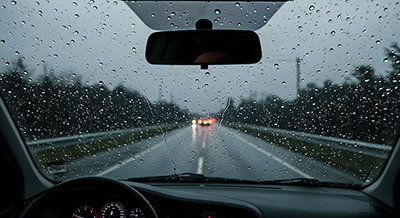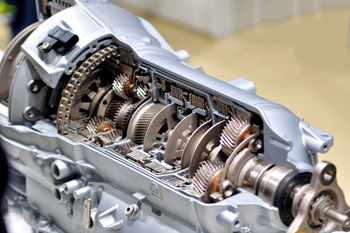Rainy weather can turn even a short drive into a dangerous situation if your vehicle isn’t properly prepared. Slippery roads, reduced visibility, and longer stopping distances all increase the risk of accidents. The good news? With the right vehicle maintenance and safe driving habits, you can stay protected behind the wheel—no matter how hard it’s pouring.

Here are some essential tips to help you prepare your vehicle and drive safely in rainy conditions:
🚘 Vehicle Preparation Tips
1. Check Your Tires
Your tires are the only point of contact between your car and the road. Make sure:
-
Tread depth is at least 2/32 of an inch (use a penny test!)
-
Tires are properly inflated
-
There are no visible cracks or bulges
Worn-out tires lose traction quickly on wet roads, increasing the risk of hydroplaning.
2. Inspect Your Wipers
Wiper blades should leave your windshield streak-free. If they’re squeaking, skipping, or smearing, it’s time for a replacement. In heavy rain, clear visibility is your first line of defense.
3. Test Your Headlights and Brake Lights
Rain reduces visibility for all drivers. Make sure all exterior lights—especially headlights, taillights, and brake lights—are clean and fully operational so other drivers can see you clearly.
4. Check Brakes and Brake Pads
Rain can impact braking performance. If you notice any squeaking, grinding, or reduced stopping power, have your brakes inspected immediately.
5. Ensure Proper Defogger Function
A foggy windshield can severely impair your vision. Make sure your vehicle’s defogger and climate control systems are working properly before you head out in the rain.
🚦 Safe Driving Tips in the Rain
1. Slow Down
Wet roads reduce traction. Driving even 5–10 mph slower can significantly reduce your chances of skidding or hydroplaning.
2. Increase Following Distance
Give yourself at least a 4–5 second cushion between you and the vehicle ahead. This gives you more time to react in case of sudden braking.
3. Avoid Sudden Movements
Brake, accelerate, and steer gently to maintain control. Sharp turns or sudden stops can cause your vehicle to lose traction.
4. Watch for Standing Water
Driving through deep puddles can cause your vehicle to hydroplane or damage internal components like the engine or electrical systems. When in doubt, go around or slow down.
5. Use Headlights, Not High Beams
Low-beam headlights help you see and be seen. Avoid using high beams in heavy rain, as they can reflect off water droplets and reduce visibility.
Need a Rainy Weather Checkup?
Before the next storm rolls in, stop by our shop for a quick inspection. We’ll check your tires, brakes, wipers, and lights to make sure your vehicle is road-ready—rain or shine.
Schedule your appointment today and drive safer, even in the worst weather.
Lim’s Auto Body is a full service auto body and mechanical repair shop locally owned and operated in Largo, Florida. For more information, go to our web site www.limsautobody.com or call (727) 422-3232.

